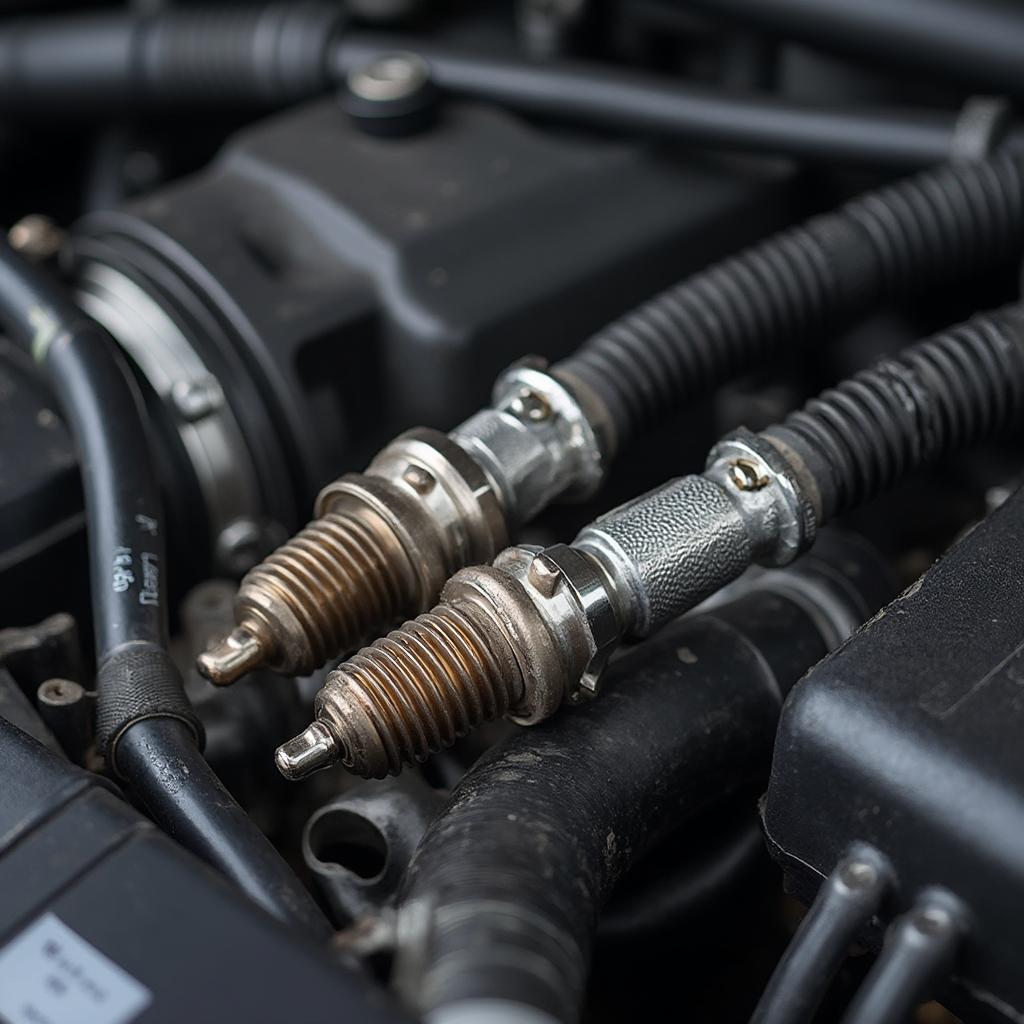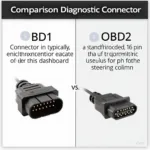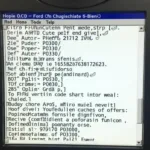A P0301 diagnostic trouble code (DTC) on your Mitsubishi Lancer signifies a misfire detected in cylinder 1. This article will guide you through understanding this code, its potential causes, common symptoms, and how to diagnose and fix the issue.
Understanding the P0301 Code in Your Mitsubishi Lancer
The P0301 code specifically points to a cylinder 1 misfire. A misfire happens when the air-fuel mixture in the cylinder fails to ignite properly, or not at all. This can lead to poor performance, reduced fuel efficiency, and increased emissions. In a Mitsubishi Lancer, this problem can be caused by a variety of issues ranging from simple spark plug problems to more complex issues with the fuel system or even internal engine damage. Identifying the root cause is crucial for an effective repair.
Common Causes of a P0301 Code
Several factors can trigger a P0301 code in your Mitsubishi Lancer. Here are some of the most common culprits:
- Faulty Spark Plugs or Wires: Worn-out or fouled spark plugs are a frequent cause of misfires. Damaged or corroded spark plug wires can also prevent the spark from reaching the cylinder.
- Vacuum Leaks: Leaks in the vacuum system can disrupt the air-fuel mixture, leading to misfires.
- Fuel Injector Problems: A clogged or malfunctioning fuel injector can prevent the correct amount of fuel from entering cylinder 1.
- Low Fuel Pressure: Inadequate fuel pressure can also cause misfires. This could be due to a faulty fuel pump or a clogged fuel filter.
- Compression Issues: Low compression in cylinder 1, possibly due to worn piston rings or valves, can prevent proper combustion.
- Ignition Coil Problems: A failing ignition coil can’t produce the necessary spark for ignition.
- Faulty Camshaft or Crankshaft Sensor: These sensors provide crucial timing information to the engine control module (ECM). Malfunctioning sensors can lead to timing issues and misfires.
- ECM Issues (Rare): While less common, a faulty ECM can also contribute to misfires.
 Mitsubishi Lancer Spark Plugs and Ignition Wires
Mitsubishi Lancer Spark Plugs and Ignition Wires
Symptoms of a P0301 Code
Experiencing a P0301 code can manifest in a number of ways. Here are some symptoms you might encounter:
- Check Engine Light: The most obvious sign is the illumination of the check engine light on your dashboard.
- Rough Idle: The engine might vibrate excessively while idling.
- Reduced Power and Acceleration: You might notice a decrease in engine performance and sluggish acceleration.
- Poor Fuel Economy: A misfire can significantly reduce your car’s fuel efficiency.
- Engine Hesitation: The engine might hesitate or stumble during acceleration.
- Smell of Unburnt Fuel: A strong smell of gasoline can indicate a misfire.
Diagnosing a P0301 Code
Diagnosing a P0301 code requires a systematic approach:
- Read the Code: Use an OBD2 scanner to retrieve the specific code and any other related codes.
- Inspect the Spark Plugs and Wires: Check for signs of wear, damage, or fouling.
- Check for Vacuum Leaks: Inspect the vacuum hoses and connections for leaks.
- Test the Fuel Injectors: Use a multimeter or a noid light to check the operation of the fuel injector for cylinder 1.
- Check Fuel Pressure: Use a fuel pressure gauge to measure the fuel pressure.
- Perform a Compression Test: This will determine if cylinder 1 has adequate compression.
- Test the Ignition Coil: Use a multimeter to check the resistance of the ignition coil.
- Check the Camshaft and Crankshaft Sensors: Inspect the sensors for damage or corrosion.
- Check the ECM (Last Resort): If all other components check out, the ECM might be the culprit.
Solutions for a P0301 Code
Once you’ve identified the cause, you can implement the appropriate fix:
- Replace Faulty Spark Plugs or Wires: This is often the simplest and most effective solution.
- Repair Vacuum Leaks: Replace any damaged or cracked vacuum hoses.
- Clean or Replace Fuel Injectors: Clean clogged injectors or replace malfunctioning ones.
- Replace Fuel Pump or Fuel Filter: If fuel pressure is low, replace the faulty component.
- Address Compression Issues: This may involve more extensive repairs like replacing piston rings or valves.
- Replace Ignition Coil: Replace a faulty ignition coil with a new one.
- Replace Camshaft or Crankshaft Sensor: Replace damaged or faulty sensors.
- Replace or Reprogram ECM (Rare): Consult a qualified mechanic for ECM issues.
Conclusion
The P0301 code in your Mitsubishi Lancer indicates a cylinder 1 misfire. By understanding the potential causes, symptoms, and diagnostic procedures, you can effectively address this issue and restore your vehicle’s performance. Don’t ignore this code, as a persistent misfire can lead to further engine damage and costly repairs.
FAQ
- Can I drive my car with a P0301 code? It’s not recommended to drive for extended periods with a P0301 code, as it can cause further engine damage.
- How much does it cost to fix a P0301 code? The cost depends on the underlying cause and can range from a few dollars for new spark plugs to hundreds or even thousands for more complex repairs.
- Can bad gas cause a P0301 code? While rare, contaminated fuel can contribute to misfires.
- Is a P0301 code serious? Yes, a P0301 code should be addressed promptly to prevent further engine damage.
- How often should I change my spark plugs? Consult your Mitsubishi Lancer’s owner’s manual for the recommended spark plug replacement interval.
For support, contact us via WhatsApp: +1(641)206-8880, Email: [email protected] or visit our office at 789 Elm Street, San Francisco, CA 94102, USA. We offer 24/7 customer support.

